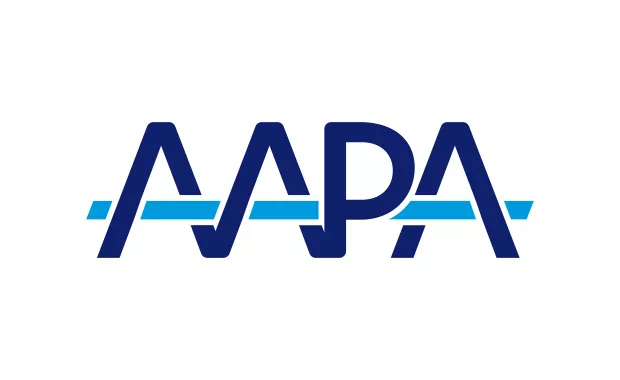What You Always Wanted to Know About EMPAs, But Were Afraid to Ask
By the Society of Emergency Medicine Physician Assistants (SEMPA)
September 26, 2017
Perhaps you’ve worked alongside PAs in your Emergency Department (ED) for years, or maybe you’ve never worked a single shift with one. Whatever your level of experience may be in working with an emergency medicine physician assistant (EMPA), you probably have asked questions such as “What is their training?”, “How do we onboard them?”, “Will they have a positive impact in the ED?”, and the most common question, “How the heck do I utilize them?”
We’re here to help you navigate these burning questions, and get you and your EMPAs on the way to working together to provide quality patient care.
A Brief History
Borne out of the need for increased access to medical care due to a shortage of primary care physicians, the physician assistant (PA) profession was established in 1965 when Dr. Eugene A. Stead, Jr., of Duke University helped start the first PA program. Seeking to take advantage of the experience with the military emergency care medical system, Dr. Stead called upon four highly trained and skilled Navy Hospital Corpsmen. These men went on to become the first PAs in the United States.
The newly formed PA profession received the support of the medical community and led to the founding of the American Academy of PAs (AAPA) in 1968, which was made up of the members of the Duke University program graduates. In 1974, the National Commission on Certification of Physician Assistants (NCCPA) was established, and by 1980 there were 42 accredited PA programs and approximately 9,000 certified PAs. Today, there are 229 accredited PA programs and more than 115,000 certified PAs.
From the start of the profession, PAs practiced in the field of emergency medicine, though their role was limited in scope. But, as the demand for emergency care started to increase and the shortage of emergency physicians began to take hold, the role of the emergency medicine PA started to change. As recently as the last seven to 10 years, EMPAs have experienced a dramatic shift in how they are utilized in the ED. Once limited to Fast Track, now EMPAs practice in all areas of the specialty, including prehospital patient care, triage and the main ED. Today’s EMPA often sees medium- to high-acuity patients and carries a high patient load. And, they can be found in all practice settings. Whether it be a trauma center, suburban or urban setting, teaching hospital, or rural ED, EMPAs are there on the frontlines working hand in hand with emergency medicine physicians and other providers to serve the millions of patients that walk through the doors of EDs nationwide and around the world.
To help support PAs in emergency medicine, the Society of Emergency Medicine Physician Assistants (SEMPA) was established in 1990 by a group of former postgraduate residency-trained EMPAs. Today, SEMPA continues to serve as the definitive source for EMPA practice guidelines, education, advocacy and support.
Physician Assistant Training
There are currently 229 PA programs across the country. Most of these programs average 26 months in length and require the same prerequisite courses as does a medical school. Applicants are required to have completed at least two years of college courses in basic and behavioral sciences, with prerequisites in anatomy, biology, chemistry, microbiology and physiology. Most programs also require prior experience in health care that includes direct patient care, such as an EMT, paramedic, Medic, Hospital Corpsman or RN, as examples. The majority of the PA programs offer a Master’s degree.
PA education is based on the medical model and is extensive in scope. The training consists of didactic instruction (anatomy, physiology, pharmacology, pathophysiology, microbiology, physical diagnosis, and more) and clinical rotations, with the requirement of more than 2,000 hours of clinical rotations in:
- Emergency medicine
- Family medicine
- General surgery
- Internal medicine
- Obstetrics and Gynecology
- Pediatrics
- Psychiatry
Many programs offer elective rotations so graduates may finish with additional emergency medicine experience.
PA Postgraduate Programs – often referred to as PA Residencies or Fellowships – are optional, but becoming increasingly desirable for graduating PAs.
Similar in structure to physician residencies, PA postgraduate programs are 12-18 months of specialized emergency medicine training and are usually affiliated with a physician emergency medicine residency. The majority of the time is spent in the ED but depending on the program there are also off-service rotations in anesthesia, critical care, trauma, ultrasound, pediatric emergency medicine, EMS, burns, toxicology and more.
Most PA postgraduate programs also incorporate weekly didactic conference, which includes lectures, simulation lab, journal club, morbidity and mortality conference, and other academic activities similar to physician emergency medicine residency training. In many programs, the PA residents train alongside physician residents.
To help standardize PA postgraduate training, SEMPA developed the Emergency Medicine Physician Assistant Postgraduate Training Program Standards. The goal of the standards is to help create consistent and expected outcomes for those employing the EMPAs in the program as well as those graduating the program.
Onboarding EMPAs
Getting your newly hired EMPA up to speed and ready to practice on the floor can be daunting, but it doesn’t have to be. There are many things you can do to ensure the success of both the EMPA and ED.
One important aspect to keep in mind is that onboarding an EMPA is an investment, particularly if he or she is a new graduate. New EMPAs need more guidance, supervision, education and opportunities to gain experience than a more seasoned EMPA. The onboarding for the new PAs should include ongoing didactic education that specifically focuses on emergency medicine, and hands-on skills training can be quite beneficial. Physicians should also be prepared to provide newly graduated PAs with more detailed, deliberate guidance and supervision.
Scheduling for an onboarding PA should also be taken into consideration. Newly graduated PAs should not be scheduled as the only PA in the ED or during peak times until they gain more experience. But even PAs who have been practicing emergency medicine for some time will need onboarding into what is a new ED – and new policies, processes and procedures – for them. Both should be added to the schedule as an “extra person” for a predetermined number of orientation shifts.
Establishing a clear scope of practice is also vital. Early on, the emergency medicine physician should outline the EMPA’s scope of practice for that ED based on state laws, hospital policies and the PA’s level of experience. It’s also a good idea to develop an onboarding plan to help gauge and monitor the progress of the EMPA’s integration into the ED. EMPAs should be allowed to practice at the top of their license for maximal efficiency, taking into account adequate onboarding and experience.
Having a Chief/Lead PA within the ED to help the medical director oversee PA operations and act as a liaison between the PAs and physicians can be quite valuable.
Whether you’ve hired a new EMPA or a seasoned veteran, ultimately, having a culture within the ED that is supportive of EMPAs can make the biggest difference in ensuring a positive experience for everyone.
Utilization of EMPAs
Appropriate use of EMPAs can help an ED become more efficient and cost-effective.
As previously mentioned, in the last decade, EMPAs have seen a paradigm shift in scope of practice. Today’s EMPA can be found treating simple pediatric fever and upper respiratory infections all the way to more complex conditions, such as diabetic ketoacidosis, acute coronary syndrome and trauma patients.
EMPAs have also become involved in administrative roles. They serve as Chief/Lead PAs, assistant medical directors, EMS Coordinators and on hospital committees. They can also be found in academic medical centers working alongside and teaching PA students, medical students and physician residents. EMPAs are also researchers, which is why SEMPA established a joint research grant with the Emergency Medicine Foundation.
A 2017 SEMPA Practice Survey illustrates current trends in EMPA practice. Eighty-seven percent (87%) of respondents indicated that they work in the main ED. Fifty-five percent (55%) reported that the highest degree of severity that they routinely see is emergency severity index (ESI) level 2-3 and thirty-nine percent (39%) reported seeing ESI 1-2 routinely. And while advanced procedures varied by frequency, the survey did find respondents performing airway management, advanced wound management, lumbar puncture, and ultrasound-guided procedures, along with several other procedures.
Impact of Utilizing EMPAs
The benefits to using PAs in the ED are numerous.
Given that EMPAs are trained in the medical model, like physicians, they bring a like-minded approach when evaluating and treating patients. EMPAs value the PA-physician team approach to patient care so the ability to collaborate makes the partnership successful. And, given the roles and patient load an EMPA can take on, EMPAs are cost-effective.
The addition of EMPAs can improve flow within an ED, as demonstrated in a study by Ducharme et al, which looked at six Canadian EDs.1 The study found that the use of EMPAs resulted in patients who were 1.6 times more likely to be seen within established wait time benchmarks. Length of stay was also 30.3% lower when EMPAs were involved.
Patients are consistently satisfied with the care they receive by EMPAs, a valuable quality to physician groups and hospitals.2 In a survey of 1,000 emergency physicians, most felt that PA staffing may increase patient satisfaction, decrease wait times, and improve patient communication, thus decreasing malpractice risk.3 The Doctors Company, the nation’s largest physician-owned malpractice insurer, has compiled data from 2001-2010 showing that emergency medicine only accounts for 6% of all claims brought against PAs.4
Finally, EMPAs are being utilized to staff geographic areas that have challenges recruiting emergency physicians. Some models have an emergency physician working with a team of EMPAs and some have the EMPA working solo in critical access hospitals with physician consultation available.
In an era where there are simply not enough emergency physicians along with financial constraints, EMPAs can supplement the emergency care workforce to provide safe, quality patient care.
Resources
Below are additional articles regarding the utilization of EMPAs.
Tips for Collaborating with Advanced Practice Providers
http://www.acepnow.com/article/tips-for-collaborating-with-advanced-practice-providers/?singlepage=1
PA Training and Supervision: A Conversation with SEMPA Leadership
(link to http://epmonthly.com/article/pa-training-and-supervision/
Myth v. Fact: The Truth Behind Common PA Misconceptions
http://epmonthly.com/article/fact-v-fiction-the-truth-behind-a-few-common-empa-misconceptions/
PA Training and Oversight: A Model Worth Copying?
http://epmonthly.com/article/pa-training-oversight-model-worth-copying/
SEMPA (www.sempa.org) and AAPA (www.aapa.org) are also great resources. If you require any assistance with your EMPA program, or have questions about EMPAs feel free to contact SEMPA at [email protected].
References
- Ducharme J, Alder RJ, Pelletier J, Tepper J. The impact on patient flow after the integration of nurse practitioners and physician assistants in 6 Ontario emergency departments. CJEM. 2009;11(5):455-461.
- Counselman FL, Graffeo CA, Hill JT. Patient Satisfaction with Physician Assistants (PAs) in an ED Fast Track. Am J Emerg Med. 2000;18(6):661-665.
- Gifford A, Hyde M, Stoehr JD. PAs in the ED: Do physicians think they increase the malpractice risk? JAAPA. 2011;24(6):36-38.
- The Doctors Company. Mid-level Practitioner Liability: Preventive Action and Loss Reduction Plan. http://www.thedoctors.com/ecm/groups/public/@tdc/@web/@kc/@patientsafety/documents/article/con_id_005897.pdf. Accessed August 22, 2018.
This article was written for The Pulse, an online publication of the American College of Osteopathic Emergency Physicians.
Thank you for reading AAPA’s News Central
You have 2 articles left this month. Create a free account to read more stories, or become a member for more access to exclusive benefits! Already have an account? Log in.



